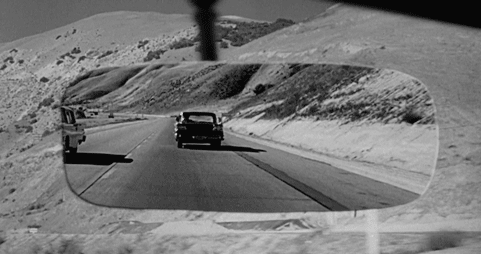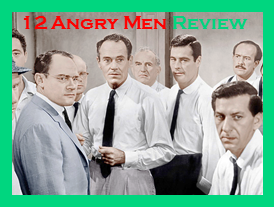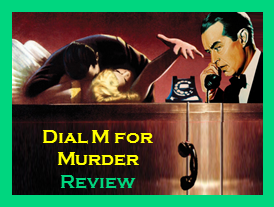Psycho (Film): Review.
Year: 1960
Category: Psychological Horror.
Director: Alfred Hitchcock.
Cast: Anthony Perkins, Janet Leigh, John Gavin, Vera Miles, John McIntire, Martin Balsam, Simon Oakland, Patricia Hitchcock.
.png)
Today I decided to talk about a classic suspense film, and of course also cinema in general: Psycho by Alfred Hitchcock. The screenplay of the film, written by Joseph Stefano, is based on the 1959 novel of the same name written by Robert Bloch.
The premiere of the film was faced with many inconveniences, since it had no precedent in its description of sexuality and violence, from the first moment we are shown to an unmarried couple sharing a bed, something never seen before, especially considering that the female character did not have a shirt. Other small, but not irrelevant for that moment, controversial is that a character was shown flushing a toilet, something never shown in the America until that moment.
The controversies were many, many probably unwarranted, an anecdote that serves as an example is that which arises when Alfred Hitchcock discussed with some of the censors responsible for compliance of the Production Code, the set of industry moral guidelines that were applied to most United States motion pictures released by major studios from 1930 to 1968, because they claimed that one of the scenes could be seen one of the breasts of the actress Janet Leigh, however, Hitchcock did not modify the scene and after a few days he sent it again to be approved, and each of the censors changed his opinion: those who had seen the breast before said that they did not do it now, and those who had not done it before, said they did now. They finally admitted the movie after Hitchcock agreed that he would remove a shot that showed the buttocks of Leigh's stand-in.
.gif)
The curiosities and interesting facts that surrounded its production, filming, promotion, premiere and reception are so many that I could not talk about them without extending this text infinitely, which would be a complete madness considering the large amount of written and audiovisual content that exists about this film, and that probably explains everything with much more detail and precision.
The story begins with Marion Crane, a real estate secretary in Phoenix, Arizona, that discusses with her boyfriend Sam Loomis because they can not get married until he pays his debts, then she goes back to work, where a client pays his boss $ 40,000 in cash, so Marion's boss asks her to take the money and deposit it in the bank before going home early, but Marion instead of going to the bank drives to Fairvale, California, where Sam lives, taking the money with her.
The House by The Railroad by Edward Hopper, 1925.
At the motel, Norman invites Marion to dinner at his house, a proposal that she accepts, however, from her room she can hear how Norman's possessive mother refuses to let her dine in the house with Norman, so they decide to dine together in the motel parlor while they have a conversation.
After dinner, Marion goes to her room, and apparently the conversation she had with Norman in some way causes her to regret stealing the money, so she decides that she will spend the night at the motel and that she will come back to return the money, however, Norman's mother is not very happy with their new guest and will do something that will change everything.
.gif)
Although I've heard some negative reviews, especially from young people like me, accustomed completely to another rhythm and another way of consuming movies, I consider this a spectacular film that I enjoyed seeing much more than I expected. The shots of Hitchcock and the use he makes of the light is nice to see, the choice of the actors was accurate, the script is very well done, and the iconic use of sound to generate suspense and terror is fantastic, and although everyone knows that the film uses a MacGuffin, in this case the stolen money, I would say that it does not have one but two, when the first loses its effect the second takes its place, in this case it is not an object but a character.
The choice of the actors was good and right, Janet Leigh and Anthony Perkins are great, and although Vera Miles, John Gavin, Martin Balsam, John McIntire do not do it badly, I do not consider that they do something really special.
It is true that when I saw the film, I already knew the famous final twist, I also knew each of the important scenes, but I still liked it. And although it is also true that for the modern spectator the suspense and terror of Psycho may seem child's play, this is because from that moment the movies became more and more explicit, and many things that were considered original and unique at the time of its release, today it is no longer, mainly because other subsequent authors were inspired by this type of classic films on different occasions until the resources are exhausted, so that if we first see all the modern content and then we see the original, this seems very basic and ordinary, however, there can be no car if the wheel does not exist first.
In 60 years they will probably copy many times things done by Tarantino in Pulp Fiction, by Christopher Nolan in Memento or Inception, by David Lynch in Mulholland Drive, and then the spectators of that moment will see the past, and what will they say? Does each original and innovative film lose its quality if it is copied over and over again? I think not, for that reason I recommend it.
.png)
If you are located in Canada, France, Iceland, Italy, Japan, Sweden or Switzerland you can enjoy this excellent movie on Netflix, otherwise you can rent or buy the DVD or Blu-Ray of the movie, or even better the complete collection, on Amazon. Do it now!
.png)
.png)
And if you already saw the movie and you liked it, and you want more about this story and its origins and continuation, then you can read Robert Bloch's novels, which Hitchcock and Stefano used to create this magnificent film. Do it now!
.png)
.png)
.png)
.png)
.png)
.png)
.png)



Alfred Hitchcock's Psycho sounds like an unorthodox film for it's time period, particularily because you've mentioned that there was no precedent for sexuality and violence. Thank you for sharing this review with us, and thank you for sharing how we can access this film! I might give it a watch some time this week. Looking forward to reading future posts!
Best Regards,
Blue Baikal
https://www.bluebaikal.io/en
Thanks!